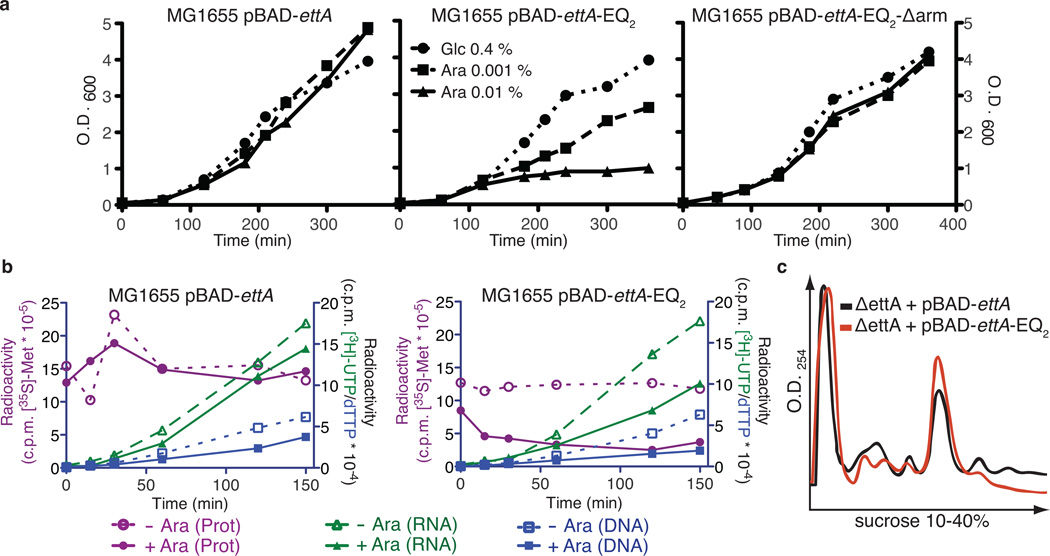Figure 3.
Expression of EttA-EQ2 causes trans-dominant toxicity in vivo due to inhibition of protein synthesis. (a) Graphs showing OD600 profiles during expression of EttA variants in E. coli MG1655 in LB medium at 37 °C. Cells harboring pBAD-ettA, pBAD-ettA-EQ2, or pBAD-ettA-EQ2-Δarm plasmids were grown overnight in LB with 0.4% (w/v) glucose (Glc) to repress EttA expression and then diluted 1:100 into the same medium or alternatively one containing 0.001-0.01% (w/v) arabinose (Ara) to induce increasing levels of expression. (b) Graphs showing results from experiments using radiolabeled precursors to characterize the influence of expressing EttA variants on protein, RNA, and DNA synthesis in vivo. MG1655 cells harboring pBAD-ettA or pBAD-ettA-EQ2 plasmids were grown at 37 °C in M9 glycerol minimal medium to OD600 ~0.2 prior to induction of EttA expression using 0.2% (w/v) Ara at zero time on these graphs. RNA or DNA were labeled by adding [3H]UTP (green) or [3H]dTTP (blue), respectively, to the cultures at the same time as the inducer, while protein was labeled at the indicated time points by subjecting an aliquot of the culture to a 1 minute pulse with [35S]methionine (red). Cells were spotted onto a Whatman 3MM filter and washed with trichloroacetic acid (TCA) before scintillation counting of the radioactivity incorporated into polymers. (c) Plots of sucrose gradient profiles of polysomes from MG1655 ΔettA cells harboring pBAD-ettA or pBAD-ettA-EQ2 plasmids induced with 0.1% Ara for 30 minutes after reaching an OD600 of 0.6.

